Luminaires with motion sensor
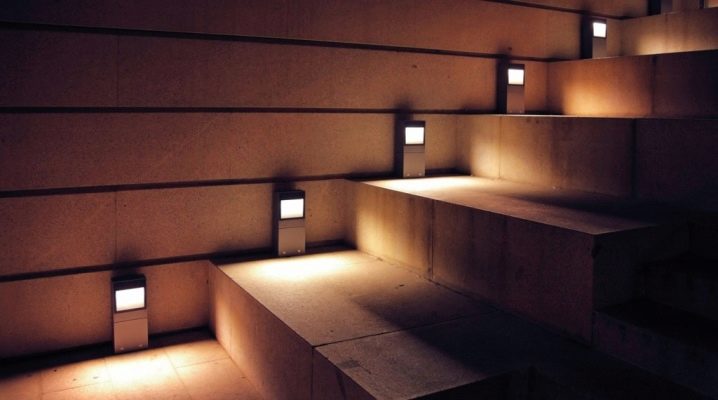
When choosing lighting devices, great attention is paid to such qualities as ease of installation and use, economical consumption of electrical energy. Among modern devices, luminaires with a motion sensor are in high demand. These devices turn on when a moving object is detected and turn off after the movement in the controlled area stops. Automatic lamps are easy to use and can significantly reduce electricity consumption.
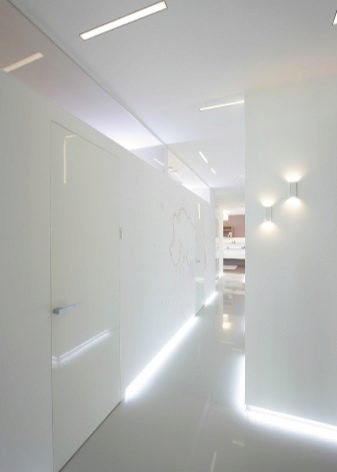
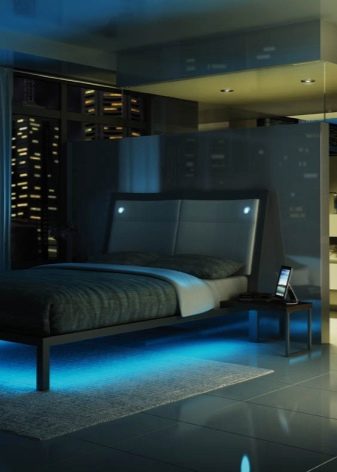
Advantages and disadvantages
Due to the presence of a motion controller that reacts to the movement of an object, the light will burn exactly as long as the person is in the control zone of the device. This allows you to reduce energy consumption by up to 40% (compared to standard consumption).
The owners of such devices do not need to use the usual light switches, which greatly simplifies the lighting control process.
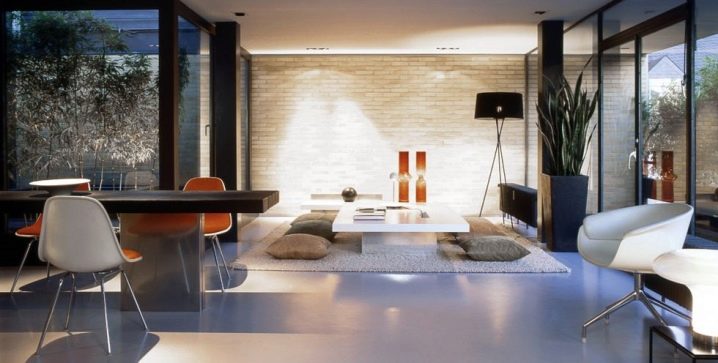
Another advantage of automatic lamps is a wide range of applications: streets, public places, industrial and residential premises, offices, entrances. Modern manufacturers offer a wide variety of models with different designs.
Advantages of luminaires depending on the type of installed sensor:
- No harmful radiation is emitted from infrared models. The range of motion detection can be adjusted as precisely as possible.
- Ultrasonic devices are inexpensive and highly resistant to external influences. The performance of such a model cannot be affected by unfavorable natural conditions (precipitation, temperature drops).
- Luminaires with microwave sensors are the most accurate and can detect the slightest movement of objects. Performance does not depend on environmental conditions, as with ultrasonic models. Another important advantage of microwave devices is the ability to create multiple independent surveillance areas.
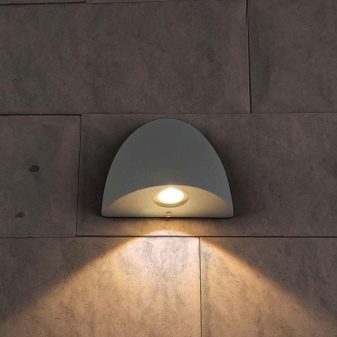

The disadvantages of lamps with motion sensors include the following:
- Ultrasound models only respond to sudden movements. It is also not recommended to use them outdoors - due to false alarms caused by frequent movements of natural objects. Such patterns can negatively affect animals that can perceive ultrasonic waves.
- Infrared devices are falsely triggered by hot air currents (air conditioners, wind, radiators). Have a narrow range of operating temperatures. Outdoor accuracy is poor.
- Luminaires with microwave sensors can be falsely triggered when movement occurs outside the controlled area (set monitoring range). In addition, microwave waves emitted by such devices can harm human health.
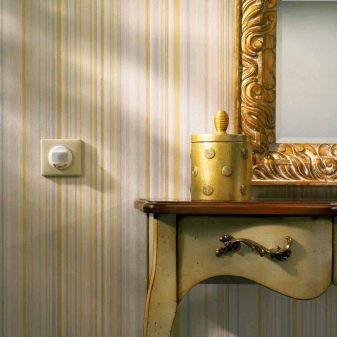
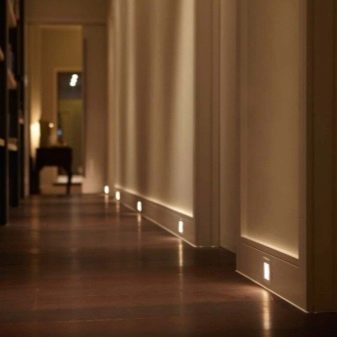
Principle of operation
The general principle of operation of luminaires with motion controllers is to automatically turn on / off light sources upon a signal from a sensor. It should be noted that in such devices, various types of sensors can be used, which determines the method of detecting the movement of objects and affects the principle of operation of the system as a whole.
Models with an infrared motion detector work based on the principle of capturing heat radiation in a controlled area, which is transmitted from a moving object.The motion sensor monitors the change in the thermal field in the controlled area. Such a field changes due to the appearance of a moving object, which, in turn, should have a temperature of thermal radiation 5 degrees Celsius higher than that of the environment.
The infrared signal passes through the lenses and enters a special photocell, after which the electrical circuit is closed, which entails turning on the lighting device (activating the lighting system).
Most often, lighting devices with an infrared sensor are installed in homes and industrial buildings.
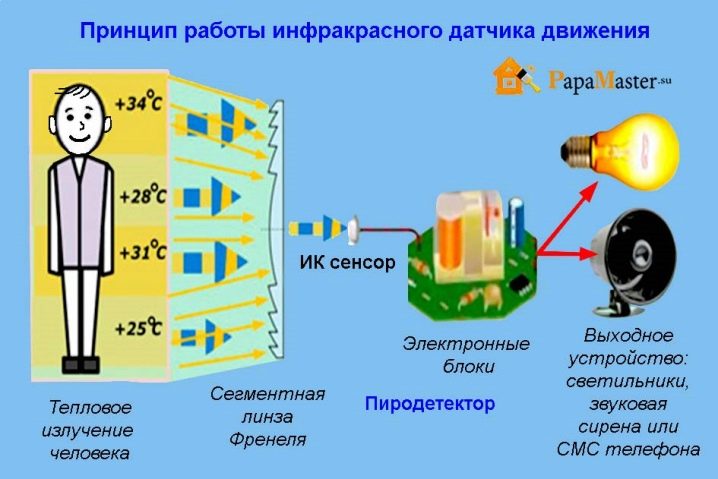
An ultrasonic motion sensor monitors the movement of objects using ultrasound. The sound waves generated by the sensor (the frequency can vary from 20 to 60 kHz) fall on the object, are reflected from it with a changed frequency and return back to the radiation source. A sound absorber and an oscillation emitter built into the sensor receive the reflected signal and compare the difference between the transmitted and received frequencies. When the signal is processed, the alarm relay is activated - this is how the sensor is triggered, the light turns on.

Microwave regulators work in a similar way. Instead of sound, such models emit high frequency magnetic waves (5 to 12 GHz). The sensor detects changes in reflected waves that cause movement of objects in the controlled area.
Combined devices have several types of sensors and work using several methods of receiving a signal.
For example, such models can combine microwave and ultrasonic sensors, infrared and acoustic sensors, and so on.
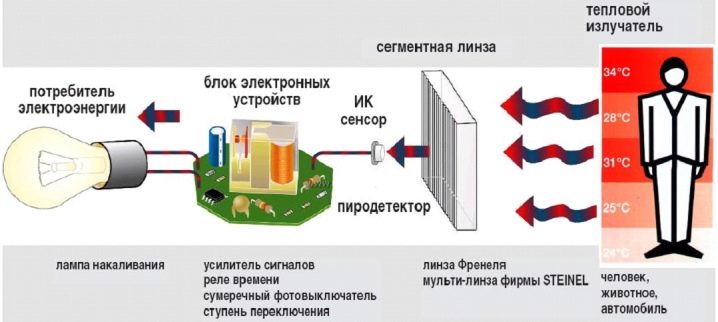
Views
Luminaires with motion controllers can be divided into groups according to several criteria. By the type of motion sensor, there are: microwave, infrared, ultrasonic, combined types of devices. The principle of operation of the lighting device depends on the type of sensor.
There is a classification of luminaires according to the method of installation of the motion sensor. The sensor module can be built-in, located in a separate housing and attached to the luminaire, or external (installed anywhere outside the luminaire).
According to the color range of the luminous flux, there are products of the following types:
- with yellow light;
- with neutral white;
- with cold white;
- with a multi-colored glow.

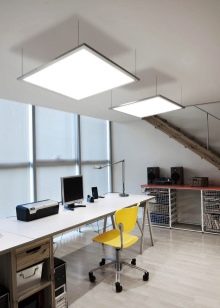

According to the purpose of the installation site, there is a division into household (installation in residential premises), outdoor and industrial (installed in industrial and office buildings).
By design and shape, they are distinguished:
- lanterns (used for street lighting);
- spotlights (directional illumination of certain objects);
- LED lamp;
- appliances with a retractable lamp;
- single-reflector retractable luminaire with height adjustment;
- flat lamp;
- oval and round designs.
By the type of installation, ceiling, wall and stand-alone models are distinguished. By type of power supply - wired and wireless devices.
Incandescent lamps, fluorescent, halogen and LED devices can be used as light sources.
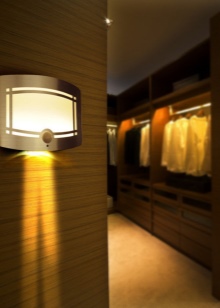
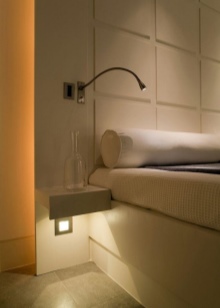
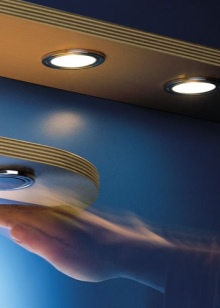
Additional functions
Modern luminaire models can include several sensors at once. From the point of view of lighting control, such models are more convenient and perfect. The LED luminaire with a light sensor and a motion sensor allows you to control the light while fixing the movement of an object only in the case of a low level of natural light. For example, if the movement of an object is detected in the monitored area, the light will turn on only at night. This model is great for street lighting.
A combined model with a sound sensor and a motion sensor is not so common. In addition to tracking movable objects, the device monitors the noise level.
When the noise level rises sharply, the sound sensor transmits a signal to turn on the lighting.
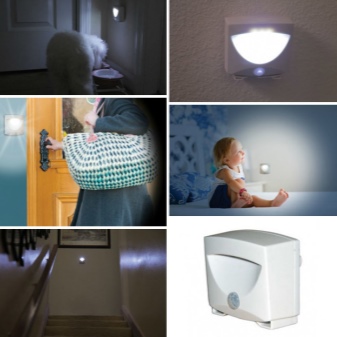
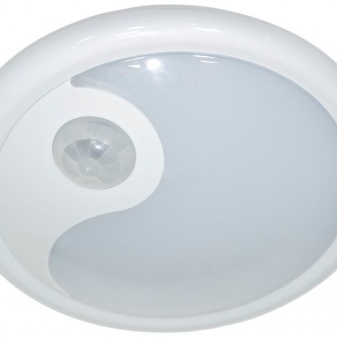
Additional built-in functions help to most accurately configure the device for its further correct operation. These adjustments include: setting the shutdown delay, adjusting the light level, adjusting the sensitivity to radiation.
Using the time setting function, you can set the interval (interval) during which the light will remain on from the moment of the last motion detection in the controlled area. The time can be set in the range from 1 to 600 seconds (this parameter depends on the model of the device). Also, using the time regulator, you can set the sensor response limit (from 5 to 480 seconds).
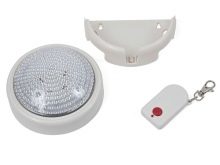
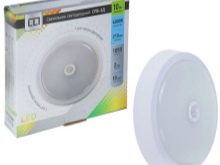

Adjusting the illumination level allows you to adjust the operation of the sensor during the daytime (daytime). By setting the required parameters, the device will turn on only in poor lighting conditions (compared to the threshold value).
Adjusting the sensitivity level will avoid false alarms for minor movements and movements of distant objects. Additionally, it is possible to adjust the diagram of the tracking zones.
To exclude unnecessary places from the monitored area, they resort to changing the tilt and rotation of the sensor.
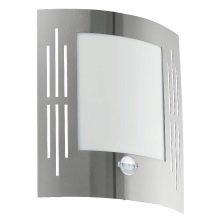
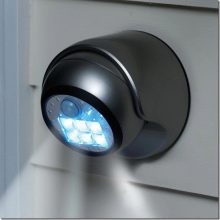

Installation and supply types
When choosing devices with a motion sensor for organizing lighting, first of all, they pay attention to the type of installation and power supply of the model. A suitable device is selected taking into account the purpose of the illuminated room, as well as the specific installation location.
The wall models have an original and modern design. In such devices, infrared motion sensors are predominantly installed. The wall luminaire is intended primarily for domestic use.
Ceiling lights are mostly flat in shape. These devices use ultrasonic sensors with a viewing angle of 360 degrees.
The surface-mounted ceiling unit is well suited for placement in bathrooms.
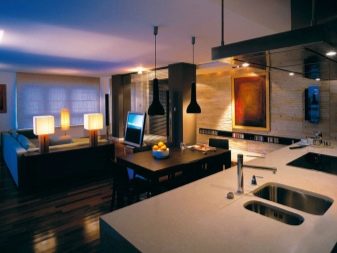
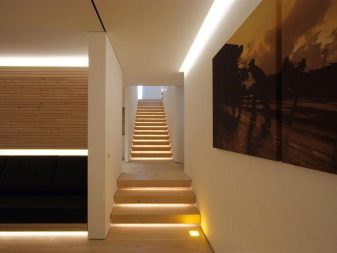
In places that are difficult to access for wiring (closets, storerooms), stand-alone devices with infrared sensors are installed. Such devices operate on batteries.
By the type of power supply, devices are divided into:
- Wired. Power supply from a 220 V. The wired device is connected to the main power line, to an outlet or socket.
- Wireless. Batteries or rechargeable battery are used as a power source.
For residential premises, wired models with direct connection to the mains are most often used.
Wireless models are great for illuminating areas around the house.

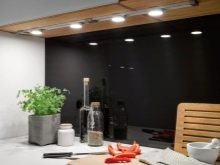
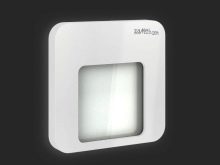
Light emission colors
Standard incandescent lamps emit a flux with a yellow (warm) color (2700 K). Devices with such a glow are well suited for organizing lighting in residential premises. This type of light will create a cozy atmosphere in the room.
Neutral white light (3500-5000 K) is found in halogen and LED lamps. Luminaires with this luminous flux are mainly installed in industrial and office premises.
The temperature of the cold white glow is 5000–6500 K. This is the luminous flux of LED lamps. This type of light is suitable for street lighting, warehouses and work spaces.
For the implementation of decorative lighting, devices with a multi-colored glow are used.
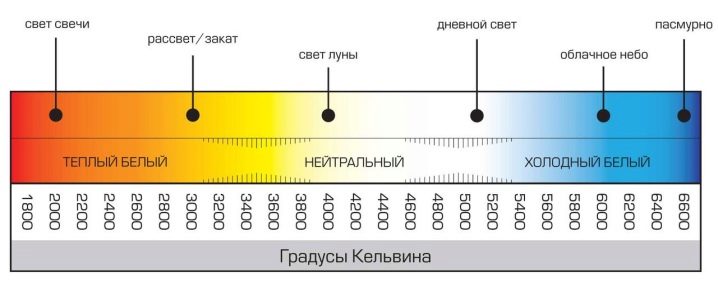
Application area
Light devices with motion sensors have a wide range of applications.
For an apartment, such devices are mainly used:
- in the bathroom and the bathroom;
- in the bedroom, study, corridor and kitchen;
- on the stairs;
- above the bed;
- in the closet, on the mezzanine, in the pantry and dressing room;
- on the balcony and loggia;
- as a night light.

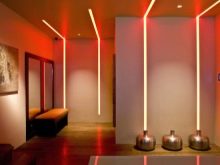

It is most convenient to use wall-mounted infrared lamps to illuminate the stairs, hallway and corridor. Also, wall models are ideal for entryways.Another good option for driveway lighting is LED models with a motion sensor.
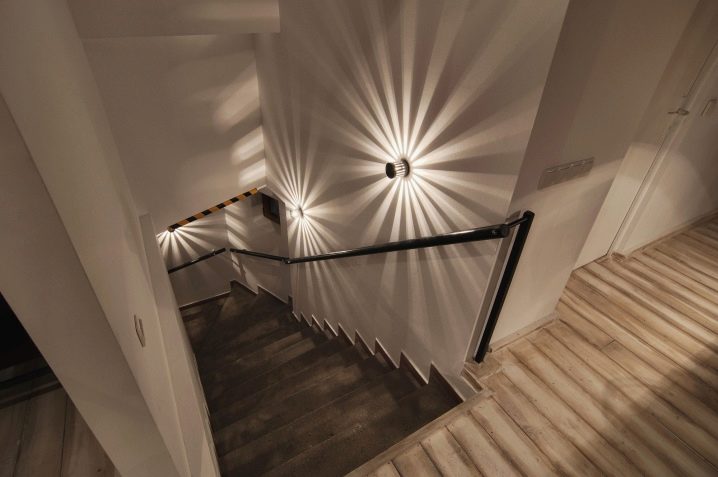
Architectural illumination of buildings is achieved by installing LED floodlights with motion sensors. Luminaires with an infrared motion sensor are most often used for safe and autonomous lighting at home.

To illuminate areas near the house or in the country (courtyard, garden), it is recommended to use wireless models of lamps. As a light source in such products, halogen, fluorescent or LED lamps are installed. Models with an incandescent lamp are not suitable for street lighting, as precipitation can damage the device. Also for the street, lights with a motion sensor are ideal.
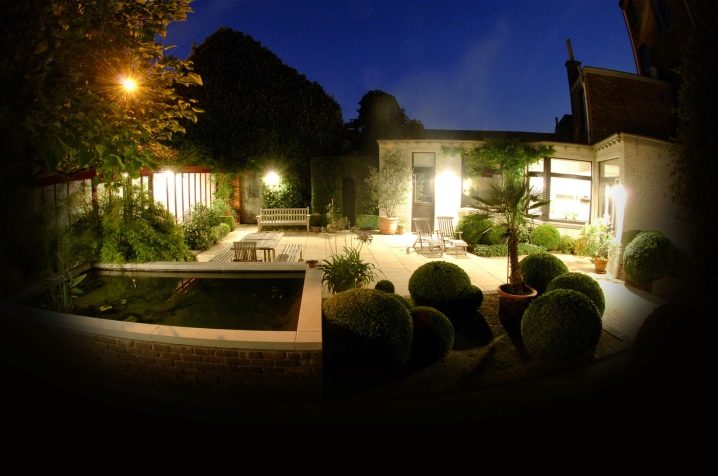
In a closet, dressing room and other places where it is difficult to conduct wiring, stand-alone battery-powered lamps are suitable. Standalone models are compact and easy to install.
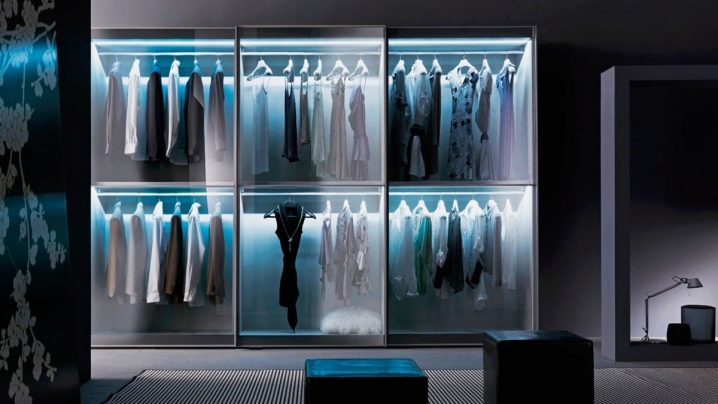
You will learn more about luminaires with a motion sensor in the following video.













The comment was sent successfully.